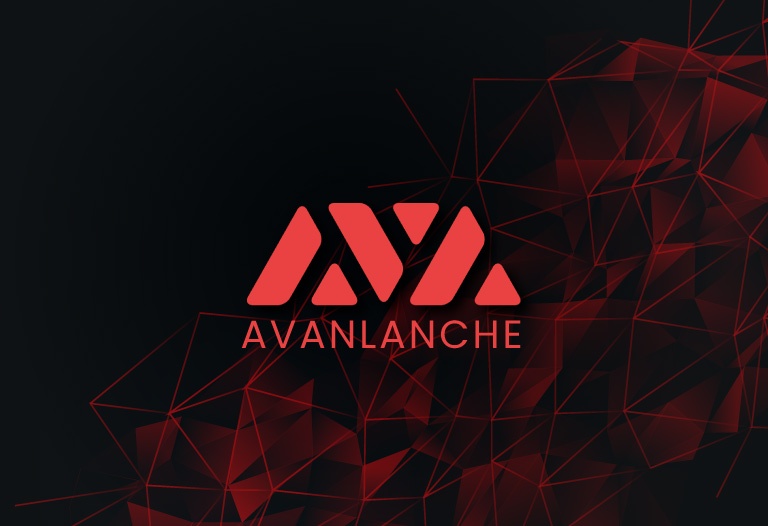
George Spencer
Avalanche (AVAX) Explained

Because of Bitcoin, blockchain has evolved in an unusual way. Because Bitcoin was the first blockchain, the design of future chains, such as Ethereum, was inspired by it. This is currently problematic for a number of reasons. Because there were so few individuals using Bitcoin when it first began in 2009, the technological restrictions were less important.
The developers of Avalanche, Ava Labs, say they have created the quickest smart contract blockchain platform to ever exist. Avalanche runs at internet-scale thanks to the use of three separate blockchains beneath the hood, paving the way for a future in which crypto is a global backbone technology.
This tutorial will teach you all you need to know about Avalanche, the twelfth-biggest cryptocurrency by market cap at the moment, including how it operates and what the AVAX token is used for. Let’s get started!
What is Avanlache?
Avalanche (AVAX) is a blockchain platform with smart contracts that focuses on transaction speed, cheap costs, and environmental friendliness. Avalanche allows you to create speedy and low-cost dApps that are Solidity-compatible. You can deploy blockchains, both private and public, to meet the specific requirements of your application.
$AVAX is Avalanche’s native coin; you can stake it to process transactions and secure the network, above the customary 51 percent threshold. Furthermore, the hardware requirements are minimal. Avalanche’s ultimate goal is to create a highly scalable blockchain that does not compromise decentralization or security.
History
Dr. Emin Gun Sirer founded Avalanche in 2019, but the Ava Labs team launched it in 2020. Avalanche quickly rose the cryptocurrency rankings and now lies just outside the top ten as the twelfth-biggest cryptocurrency by market cap. Similarly, Avalanche TVL (Total Value Locked in the Protocol) is soaring, reaching $3 billion across Avalanche dApps.
Avalanche is a genuine contender in a heated arms race to develop the world’s fastest blockchain, with a remarkable team, enthusiastic community, and loyal backers. Since its founding, it has strived to achieve the shortest completion time for blockchain transactions. The time it takes for a crypto transaction to process and be regarded permanent and irreversible is referred to as finality. Once a transaction has reached finality, it is irrevocable — it cannot be reversed or altered.
How it Works
The Avalanche ecosystem is home to a variety of projects related to decentralized finance (DeFi), digital securities, non-fungible tokens (NFTs), nodes, stablecoins, trading bots, wallets, and many more. The Avalanche wallet provides safe, non-custodial storage for Avalanche assets. The network is where you can view network statistics such as transaction volume, network activity, the list of top assets, and latest transaction updates for the P-chain, X-chain, and C-chain. Finally, to use the Avalanche Bridge, you can connect using your browser wallet (e.g., MetaMask) or the Coinbase wallet.
Exchange Chain (X-Chain)
The Exchange Chain (X-Chain) is the blockchain in charge of producing and transferring Avalanche assets. The platform’s native token AVAX is now the most popular cryptocurrency, although decentralized exchange tokens JOE and PNG aren’t far behind. Transaction fees on the X-Chain are paid in AVAX. This is comparable to how Ethereum gas fees are paid in ETH. As a result, even if you’re exchanging JOE tokens, fees are always settled in AVAX.
Platform Chain (P-Chain)
Anyone can use Avalanche’s P-Chain to create an L1 or L2 blockchain. You can even make an entire group of them. These blockchains are referred to as subnets in the network, with the P-Chain serving as the default subnet shared by everybody. The P-Chain administers the Avalanche subnet landscape by keeping track of validators, but subnets are also in charge of verifying the P-Chain.
Contract Chain (C-Chain)
Avalanche’s defining feature are smart contracts. This feature allows developers to create decentralized applications on Avalanche while benefiting from the platform’s security and scalability. The C-Chain is EVM (Ethereum Virtual Machine) compatible and runs smart contracts for the platform. Because Avalanche is EVM compatible, anyone can deploy Ethereum smart contracts. What’s the big deal about that? Because current Ethereum programs, such as DeFi titans Aave, can quickly release an Avalanche version of their product.
Latest
Altcoins
09 May 2024
Altcoins
19 Apr 2024
Altcoins
16 Jan 2024
Altcoins
31 Aug 2023
Altcoins
24 Jun 2023
Altcoins
24 Jun 2023













